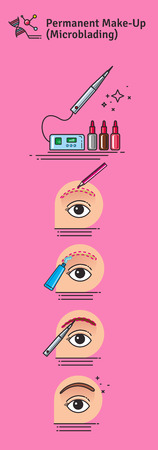What Are Dermal Fillers?
If you’ve ever caught yourself admiring someone’s plump lips or youthful cheekbones, chances are dermal fillers played a part. In the UK, these non-surgical treatments have become a staple for anyone seeking subtle tweaks or a freshened-up look—without going under the knife. But what exactly are dermal fillers? Essentially, they’re gel-like substances injected beneath the skin to restore lost volume, smooth lines, or enhance facial contours. The most common ingredient is hyaluronic acid—a naturally occurring molecule in our bodies that attracts and retains moisture. Other types may use calcium hydroxylapatite or poly-L-lactic acid, each offering slightly different results and longevity. Here in Britain, there’s a keen eye on safety and standards. While you’ll find plenty of practitioners offering fillers across the country, it’s worth noting that regulation has tightened recently: only trained professionals should be administering these treatments, and reputable clinics always use products approved by UK health authorities. This means you can feel more confident about both your results and your wellbeing—two things we all value when it comes to enhancing our natural beauty.
Popular Treatment Areas: Lips, Cheeks, and Nasolabial Folds
If you’ve ever considered dabbling in dermal fillers or simply scrolled through British beauty influencers’ feeds, you’ll know certain areas of the face are all the rage. In the UK, lip, cheek, and nasolabial fold enhancements top the charts for popularity—and with good reason. Each of these treatment zones offers a unique way to refresh your appearance while keeping that quintessentially British sense of subtlety and natural allure.
Lips: The Iconic Pout
The quest for the perfect pout is hardly new, but British aesthetics favour plumpness with poise over overt volume. Whether it’s restoring lost fullness or achieving symmetry, lip fillers allow for a bespoke approach. Many Brits opt for a gentle enhancement—think more “your lips but better”—that complements their facial features without shouting for attention.
Cheeks: Sculpted, Not Overdone
Cheek fillers have seen a surge in demand as UK clients look to recapture youthful contours or add definition without appearing “overfilled.” The goal? Subtle lift and soft structure reminiscent of classic English rose beauty. Strategic placement helps restore volume lost with age and enhances natural bone structure—a favourite among those wanting refreshed but authentic results.
Nasolabial Folds: Softening Smile Lines
Smile lines—those creases running from nose to mouth—can deepen with time (and laughter!). Fillers here aim to soften these folds, blending seamlessly into the skin for a smoother, more rested look. For many Brits, this enhancement is less about erasing every line and more about looking well-rested and approachable—never frozen or unnatural.
At-a-Glance Comparison
| Area | Main Benefit | Typical Approach in the UK | Why It’s Popular |
|---|---|---|---|
| Lips | Fullness & symmetry | Subtle volume; natural shape preservation | Bespoke results, enhanced confidence |
| Cheeks | Lifting & contouring | Gentle augmentation; focus on harmony | Youthful definition without exaggeration |
| Nasolabial Folds | Smoothing smile lines | Softening rather than eliminating lines | Fresher appearance while staying expressive |
A Personal Note on Trends and Choices
Having experienced these enhancements myself in London’s buzzing clinics, I can vouch for the artistry behind each area. What sets the British approach apart is the emphasis on enhancing what’s already there—never masking it. Whether you’re after pillowy lips, sculpted cheeks, or softened smile lines, a skilled practitioner will work with your natural features to create results that feel like you—just refreshed.

3. What to Expect During Your Appointment
Stepping into a British clinic for dermal fillers can feel both exciting and a little nerve-wracking, especially if it’s your first time. Here’s a walk-through of what you can expect during your appointment—from the initial consultation, through the actual treatment, to those thoughtful aftercare touches that UK clinics are known for.
The Initial Consultation
Most reputable British aesthetic clinics pride themselves on their thorough consultations. You’ll be greeted in a comfortable, discreet setting—think calming décor and a friendly cuppa while you wait. During your consultation, the practitioner will ask about your medical history, listen carefully to your beauty goals, and assess your facial features. It’s very much a collaborative chat; you’ll have the chance to point out what you’d like enhanced or softened, whether that’s subtle lip definition, cheek volume, or smoothing those nasolabial folds. The practitioner will then explain suitable filler options and discuss realistic outcomes with you in plain English—no confusing jargon here!
The Procedure: Gentle Precision
Once you’re ready to proceed, you’ll be shown to the treatment room. British clinics usually prioritise client comfort—expect plush treatment chairs and perhaps even soothing music in the background. The area to be treated is cleansed, and a topical numbing cream is applied for extra comfort (a staple in UK practices). Using meticulous technique and hygienic standards, your practitioner will inject the dermal filler with precision, often pausing to check on your comfort and show you progress in the mirror. The process itself is surprisingly swift—most appointments last between 30 minutes to an hour.
Aftercare: The British Way
After your treatment, you’ll be given tailored aftercare advice—usually delivered with that signature British thoroughness and warmth. This typically includes tips such as avoiding strenuous exercise or alcohol for 24 hours, keeping the area clean, and using a cold pack if needed to minimise swelling. Many clinics provide written aftercare leaflets so nothing gets forgotten after you leave. Follow-up appointments are common practice; practitioners genuinely care about your results and wellbeing, so don’t be surprised if they invite you back for a review in a couple of weeks.
Your Comfort Matters
Above all, British clinics want you to feel relaxed and confident throughout the whole journey. From bespoke consultations to attentive aftercare, every step is designed to make sure your experience feels safe, supportive, and just that little bit special—a true reflection of modern UK aesthetics culture.
4. Real Talk: Results, Risks and Realities
If you’re considering dermal fillers for your lips, cheeks, or nasolabial folds, it’s only natural to wonder what you can realistically expect – especially here in the UK, where we value transparency and results that don’t scream “I’ve had work done.” Let’s have an honest discussion about outcomes, possible side effects, and the risks every Brit should weigh up before booking an appointment.
What Results Can You Expect?
The beauty of modern dermal fillers is their versatility. Whether you’re after a subtle enhancement or a more noticeable change, skilled practitioners tailor the treatment to your goals. Here’s a quick look at typical results:
| Area Treated | Expected Result | How Long It Lasts |
|---|---|---|
| Lips | Softer, fuller lips with natural contours | 6–12 months |
| Cheeks | Lifting effect; restored youthful volume | 12–18 months |
| Nasolabial Folds | Smoother lines; less pronounced creases | 9–12 months |
Possible Side Effects: What’s Normal in the UK?
It’s quite common to experience some mild swelling, redness or tenderness after filler injections—think of it as a short-lived post-treatment glow gone a bit rogue. Most Brits find these symptoms ease within a week. However, it’s essential to know what’s normal and when to check in with your practitioner.
| Common Side Effects (Temporary) | Less Common (Seek Advice) |
|---|---|
| Mild bruising Swelling Tenderness Redness at injection site |
Lumps or uneven texture Pain lasting more than 7 days Signs of infection (heat, pus) Allergic reaction (rare) |
The Real Risks: What Should UK Clients Know?
The vast majority of filler treatments go smoothly in reputable UK clinics. That said, there are real risks to consider—especially if you choose an unqualified provider or bargain-basement deals. Key concerns include:
- Vascular complications: Rare but serious; occurs if filler enters a blood vessel.
- Migrating filler: Improper technique may cause filler to move from the intended area.
- Allergic reactions: Extremely rare, particularly with hyaluronic acid fillers used in the UK.
- Poor aesthetic outcome: Overfilling or unnatural appearance if not expertly administered.
Navigating the British Aesthetic Landscape Safely
The best advice? Choose a medically qualified practitioner registered with a professional body (like GMC or NMC). Don’t hesitate to ask about their training and experience with facial anatomy—after all, this is your face we’re talking about! Remember: in Britain, subtlety is key. The goal is always to enhance your features without sacrificing your unique character.
5. Finding a Qualified Practitioner in the UK
If you’re considering dermal fillers for the first time, one of the most important decisions you’ll make is choosing who will perform your treatment. In the UK, where aesthetics standards and regulations can differ from other countries, sifting through practitioners requires a discerning eye and a bit of local know-how.
Understanding British Licensing and Accreditation
First things first: not everyone offering dermal fillers in Britain is medically qualified. Ideally, you should seek out a practitioner who is a GMC-registered doctor, NMC-registered nurse, GDC-registered dentist, or a pharmacist prescriber with specialist training in aesthetics. These credentials guarantee that your chosen professional meets stringent safety and hygiene standards set by UK regulatory bodies. You can verify registration status online via the respective councils’ websites—an essential step before booking any consultation.
Spotting Trustworthy Clinics
When scoping out clinics, look for those registered with reputable organisations such as Save Face or the Joint Council for Cosmetic Practitioners (JCCP). These accreditations are more than just badges—they signal commitment to ethical practice and ongoing professional development. A trustworthy clinic should welcome your questions about product brands, practitioner experience, and aftercare policies. If they seem evasive or pushy, take it as a red flag.
What Sets Top Practitioners Apart?
The best British practitioners offer a bespoke consultation before any treatment. They’ll assess your facial anatomy, discuss your goals, and provide honest advice—even if that means recommending against certain procedures. Quality clinics also have clear protocols for handling complications, which is non-negotiable when dealing with injectables.
My Personal Tip: Word of Mouth Still Reigns
In my own experience navigating London’s aesthetics scene, nothing beats a personal recommendation. Chatting with friends or scrolling through independent reviews on platforms like Trustpilot can give you invaluable insight into real results and bedside manner. Remember: this is your face, so take your time researching until you find someone whose approach resonates with you—and whose credentials withstand scrutiny.
6. Aftercare and Looking Your Best
Once you’ve taken the plunge with dermal fillers, a bit of savvy aftercare will help ensure your results look natural and feel fabulous. The British climate, with its ever-changing weather, means you’ll want to be extra mindful in the days following your treatment. Expect some mild swelling or bruising—perfectly normal, but best to keep your diary relatively clear for a day or two just in case. If you’re planning a big event, give yourself at least a week before showing off your refreshed look.
Downtime: Keep Calm and Carry On
The good news is that downtime is minimal for most people. Pop on your favourite jumper, settle in with a cuppa, and avoid strenuous exercise or hot baths for 24 hours post-treatment. It’s also wise to steer clear of saunas and steam rooms for a few days (a perfect excuse to skip the gym and indulge in some much-needed self-care).
Top Aftercare Tips for Brits
- Use a cold compress to soothe any puffiness—just wrap it in a tea towel to avoid direct contact with your skin.
- Keep your head elevated when resting; prop yourself up with an extra pillow at night.
- Avoid touching or massaging the treated area unless instructed by your practitioner.
- Hold off on makeup for at least six hours; when you do apply it, opt for clean brushes and gentle products.
Maintaining Your Results
For long-lasting results, stay hydrated—carry a water bottle even if the British drizzle is relentless! Use SPF daily (yes, even when it’s cloudy) to protect your skin and prolong the effects of your fillers. Regular touch-ups every 6-12 months are typical, but your practitioner will guide you based on your individual needs. Above all, embrace your refreshed appearance with confidence—it’s about enhancing your natural beauty, not changing who you are. With the right aftercare, you’ll look effortlessly polished and quintessentially you.


